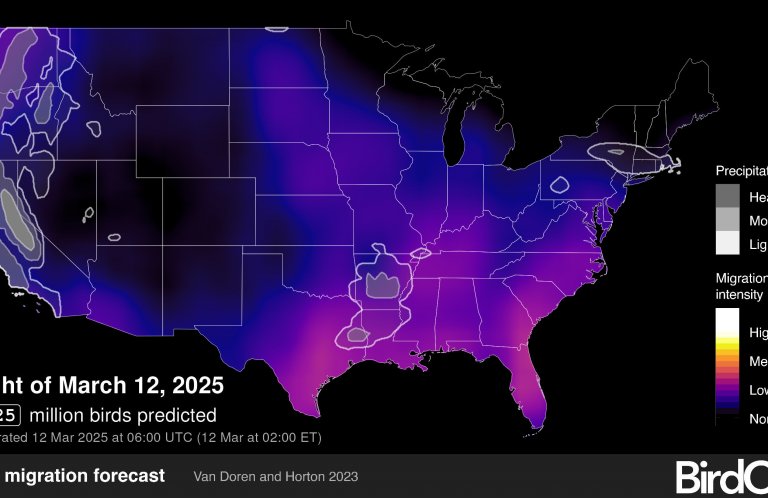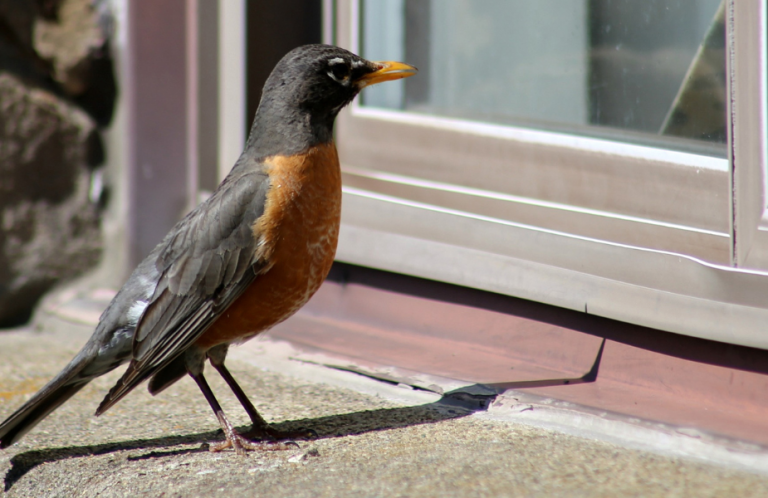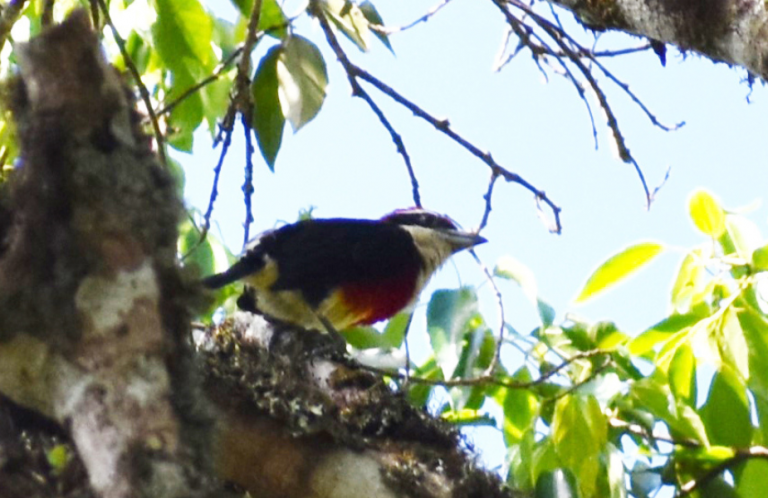Sage Grouse's Fate Depends on Historic Decisions
In the 1800s, as many as 16 million Greater Sage-Grouse lived in the wide-open sagebrush of the West. That number has since plummeted to about 210,000 birds today, and the grouse's population continues to decline. More than half of the bird's sagebrush habitat has been lost to development. Much of what land remains is crisscrossed by oil and gas developments, roads, and power lines — bad news for the skittish grouse.

Greater Sage-Grouse, Kenneth Rush/Shutterstock
Federal authorities are now poised to make historic decisions that may dramatically change the landscape of the American West: Whether to list the Greater Sage-Grouse under the Endangered Species Act, or rely on management plans for federally owned lands that, in their current form, are too weak to save the bird. The U.S. Fish and Wildlife Service is expected to issue its decision by the end of the month.
As American Bird Conservancy's Senior Policy Advisor, Steve Holmer has been working to educate members of Congress and administration officials on the sage grouse and what's at stake. Here he explains what these decisions mean for the Greater Sage-Grouse.
What factors determine whether a species is listed under the Endangered Species Act?
There are several. A species must be listed under the Endangered Species Act (ESA) if its numbers are declining due to any of the following five factors: destruction, modification, or curtailment of its habitat or range; over-utilization of the species for commercial, recreational, scientific, or educational purposes; disease or predation; inadequacy of existing regulatory mechanisms; and other natural or manmade factors affecting its continued existence.
Does the Greater Sage-Grouse meet any of these requirements?
The U.S. Fish and Wildlife Service has determined that two of these factors – concerning habitat loss and the lack of effective regulatory mechanisms – pose a “significant threat” to the Greater Sage-Grouse now and in the foreseeable future.
The regulatory processes in need of updating are Bureau of Land Management and Forest Service plans affecting roughly 50 million acres of sage grouse habitat on public lands in Oregon, California, Nevada, Utah, Idaho, Montana, Wyoming, Colorado, South Dakota, and North Dakota.

Greater Sage-Grouse, Tom Reichner/Shutterstock
Who ultimately makes the decision?
ESA listing decisions are meant to be based on the best available science. Two federal agencies make the listing decisions: the U.S. Fish and Wildlife Service and the National Marine Fisheries Service, which handles marine mammals and sea life. In this instance, the U.S. Fish and Wildlife Service determined that Greater Sage-Grouse was threatened and proposed it for listing in 2010.
But ESA decisions have become politicized. A listing can be prevented, overturned, or changed by law. In 2014, Congress passed, and President Obama signed into law, a defense bill that included a measure placing a one-year moratorium on adding Greater Sage-Grouse to the list of endangered species. New attempts to continue that moratorium — which ends on September 30 — and to overturn federal management plans for the grouse, are now being considered as part the National Defense Authorization Act and the Interior Appropriations Bill.
Given the grouse's clear decline in recent years, why is there so much speculation about whether the bird will be listed or not?
The prospect of an ESA listing has raised fears from energy and mining companies that they may have to change their current development practices in the most important sage grouse habitats. But it has also galvanized a remarkable collective effort on the part of states, industries, scientists, and federal agencies to put in place conservation measures that — if effective — could potentially forestall an ESA listing.
ABC would support a ‘no-listing' outcome — but only if the federal land management plans are allowed to go into effect and are significantly strengthened.
If the Fish and Wildlife Service decides to list the grouse, what does that mean?
When a species is listed, it becomes illegal for landowners or federal agencies to take action that would kill or harm that species, or remove or damage its habitat. Federal agencies making management decisions that might affect the species have to consult with the U.S. Fish and Wildlife Service to see if the action is allowable or not, and if mitigation and protective measures need to be applied.

Greater Sage-Grouse fighting, Pat Gaines
This is a major decision. But haven't federal agencies been working on sage grouse conservation for the past several years?
Yes. In 2011, when a deadline was established for a listing decision by Sept. 30, 2015, federal agencies swung into action. The Bureau of Land Management announced it would begin an unprecedented planning effort to update its management plans for 50 million acres of public lands where the grouse occurs. Soon after, the Forest Service announced that 20 national forests would join BLM in this regional planning effort.
Meanwhile, the Natural Resources Conservation Service began the Sage Grouse Initiative to engage private landowners in grouse conservation. To date, SGI has provided more than $300 million in support for sustainable ranching, conservation easements, and habitat restoration projects. This collaborative approach has been a big success, and the U.S. Department of Agriculture announced last month that it would extend SGI for three more years and allocate an additional $200 million in support of grouse conservation.
Federal agencies haven't been the only ones, though. Many state wildlife agencies, Joint Venture partnerships, academics, and conservation organizations are involved. They are conducting research, establishing conservation easements, and initiating habitat restoration projects. These partners are essential in efforts to save the grouse.
So there's quite a bit of action on the ground to save this bird. Is it working?
It's too soon to tell if these efforts are producing results yet. State and federal agencies will continue to count males at their lek sites each year, which has been the main basis for population estimates. We do know that grouse populations have been steadily declining at a rate of 2 percent a year since 1965. And since 1985, those numbers have dropped by an estimated 30 percent.
The Sage Grouse Initiative and other federal management plans should improve habitat conditions on private and federally owned land. But the challenge is that development on these lands is ongoing —so the risk of additional habitat loss remains.
The new federal management plans will provide more-stringent protections of grouse habitat. But if leases for oil and gas drilling or mining were approved prior to the adoption of these new plans, then those projects will be allowed to continue, causing further habitat loss.

Greater Sage-Grouse, Noppadol Paothong
What happens if the Service declines to list the bird?
We roll up our sleeves and keep working to ensure recovery of the species. Grouse conservation measures and protective standards will begin to be applied to the majority of the bird's habitat, provided that the new federal plans are allowed to go into effect. A number of issues still need to be addressed related to new and existing drilling and mining leases, proposed power lines, renewal of grazing permits, and how to alleviate unavoidable habitat losses.
In addition, the Sage Grouse Initiative will be continuing at least through 2018 to reach out to landowners and support grouse conservation projects on private lands. Federal agencies and states will continue to monitor the grouse population to determine if the plans are working to recover the species. If grouse populations don't rebound, the plans can be adjusted.
Does the sage grouse need to be listed to survive? Or are there other ways to make meaningful progress?
It all depends on how robust the federal land-management plans are. Unless these plans are strong, scientifically sound, and follow the recommendations of grouse experts, we need the bird to be listed.
Right now, drafts of these plans are weaker than we'd like. They allow for continued development in the most important grouse habitats. So it is an open question as to whether they will protect habitat and ultimately recover the species.
The Greater Sage-Grouse is an iconic species of the American West. The real question is whether we want the plains to be full of wildlife — or full of power lines and oil wells. You can have some of both, but right now we are heading toward a horizon filled with industrial infrastructure that will squeeze out the grouse.
One thing is clear. Regardless of what the U.S. Fish and Wildlife Service decides this month, Greater Sage-Grouse will need committed landowners and smart federal policy to survive.
 Steve Holmer has more than 20 years of experience working to conserve endangered wildlife. He came to ABC from the Unified Forest Defense Campaign and previously served as Campaign Coordinator of American Lands Alliance working to conserve habitat for the Northern Spotted Owl and Marbled Murrelet. In addition to protecting threatened species on western public lands, Steve directs the Bird Conservation Alliance, a network of over 200 conservation groups that builds congressional support for bird conservation programs.
Steve Holmer has more than 20 years of experience working to conserve endangered wildlife. He came to ABC from the Unified Forest Defense Campaign and previously served as Campaign Coordinator of American Lands Alliance working to conserve habitat for the Northern Spotted Owl and Marbled Murrelet. In addition to protecting threatened species on western public lands, Steve directs the Bird Conservation Alliance, a network of over 200 conservation groups that builds congressional support for bird conservation programs.


















































